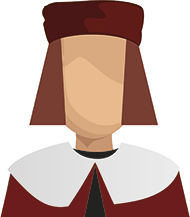
Jorge Manrique literary route

The province of Jaén has the honor of being the birthplace of Jorge Manrique, because according to all indications, he was born in Segura de la Sierra, one of the “most beautiful towns in Spain”.
The famous author of the Verses on the Death of his Father, holds a prominent place in the history of Spanish literature. So much so that he exerted a great influence on such significant authors as Machado or Lope de Vega, who went so far as to say that the Verses on the Death of his Father deserved “to be written in gold letters.”
The province of Jaén offers a literary route that will captivate you, following in the footsteps of the warrior-poet.
Start your journey in the imposing and beautiful Segura de la Sierra, where Jorge Manrique was born and spent his childhood.
Visit Chiclana de Segura, in whose castle he lived a large part of his life and from where you can enjoy the most spectacular views,…, as the sight reaches up to four provinces!
The tour concludes in Baeza, a UNESCO World Heritage city, a Renaissance jewel and where Jorge Manrique, as a man at arms, suffered one of his few military defeats and was imprisoned for a season.
Get to know the most important places where
the warrior poet lived, see imposing landscapes and discover the secrets they hold. Come to Jaén and discover it in a different way with Jorge Manrique’s literary route.
Length of the route
1 kilómeter
Estimated duration
3 hours
Type of route
on foot
PLACES THAT MAKE UP THE ROUTE
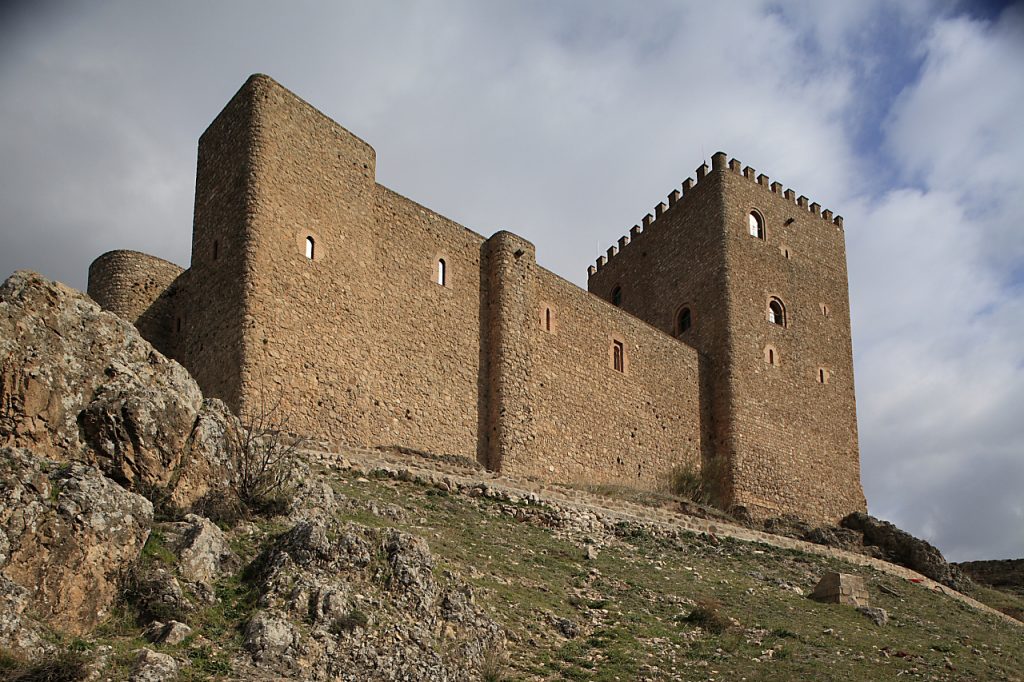
Castle of Segura de la Sierra (Interpretation space of Jorge Manrique)
The Castle of Segura de la Sierra is undoubtedly one of the main cultural attractions, not only of Segura, but of the entire environment, with portentous panoramic views of the entire mountain range. The castle was built between the 13th and 14th centuries to defend the order of Segura, by the Order of Santiago (it became the residence of the Grand Master of this Order), over the bases of previous defensive and palatial constructions (in the 8th century there was already a fortification that protected the Saqura farmhouse, from whose time the archaeological remains of the Arab Baths are preserved).…
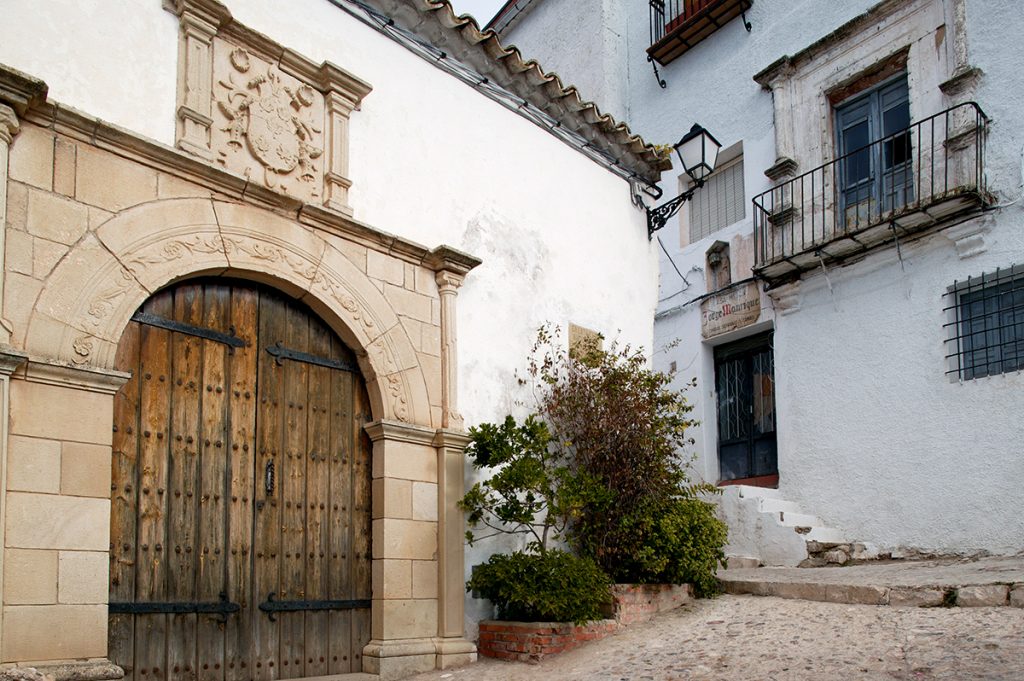
Jorge Manrique’s family house
After visiting the viewpoint, you have to go to the house where Jorge Manrique was born, which you will find just a few steps away. Although it is not documented that Jorge Manrique was born in that house (it is thought that in the case of being born in Segura de la Sierra, the option is that he most likely was born in the castle), it was the home of the Manrique family. In front of the house, take look at its façade, which still preserves the coat of arms of the Feria House (after Mencía de Figueroa, his mother),…
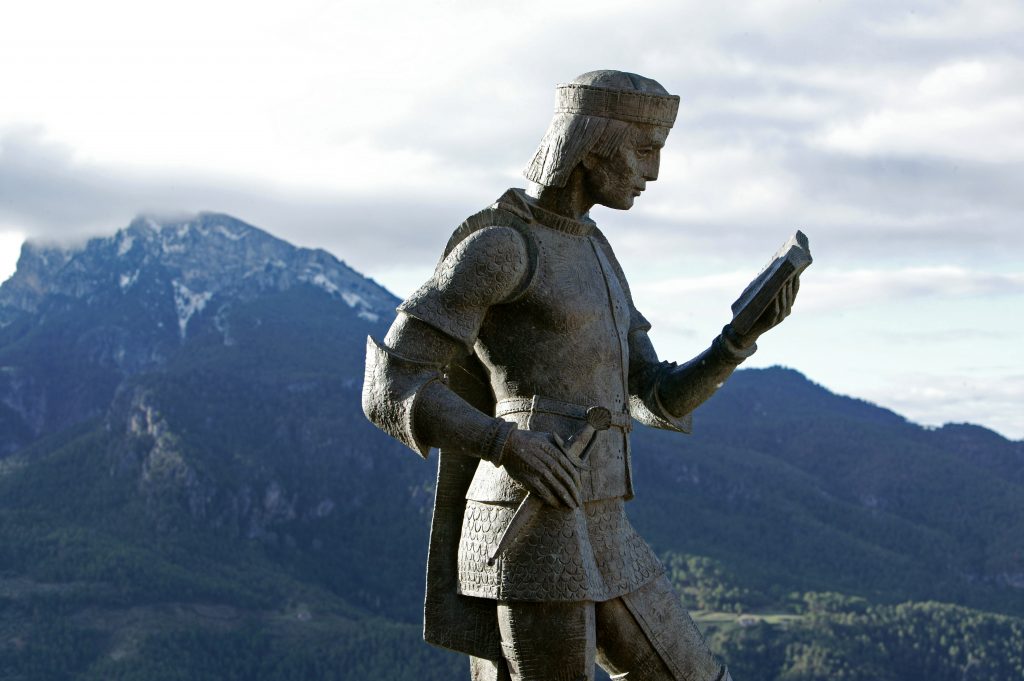
Viewpoint and monument to Jorge Manrique
Next to the Puerta Nueva, one of the entrances to the walled enclosure of Segura de la Sierra and which is adjoining the town hall, you can find both the monument to Jorge Manrique, and viewpoint that bears his name. The statue, the work of the renowned sculptor Don Miguel Fuentes del Olmo, represents the illustrious writer in his two main facets: that of a man-at-arms, wearing a warlike dress and with his right hand on a dagger; and that of a writer, who, calmly, holds and reads a book in his left hand. Therefore, an excellent way to illustrate…
Length of the route
500 meters
Estimated duration
3 hours
Type of route
on foot
PLACES THAT MAKE UP THE ROUTE

Chiclana de Segura castle, viewpoint
There is no better way to finish the author’s literary route in Chiclana than visiting the remains of the castle. Located at the highest and most inaccessible point of the town, the castle has been declared an Asset of Cultural Interest since 1985. Although barely some paintings of its walls, towers, cistern and rooms are preserved, it has one of the greatest panoramic views that can be enjoyed today, reaching up to four different provinces (Ciudad Real, Albacete, Granada and Jaén). There are also numerous geographical features such as Sierra Morena, Sierra de Segura, Sierra de Alcaraz or Sierra Nevada.…
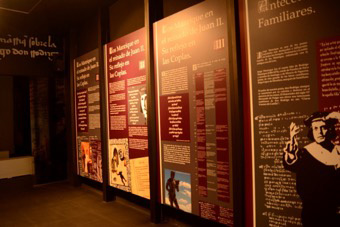
Interpretation Center “Mirador de Jorge Manrique”
The Interpretation Center “Mirador de Jorge Manrique” is the only one dedicated exclusively to the warrior poet, with the exception of the Jorge Manrique Museum in Santa María del Campo Rus (Cuenca), where the warrior poet died after being wounded in combat in the vicinity of the castle of Garcimuñoz. Here you can enjoy a complete vision of the life and work of the author and where you will delve into his facets as a man at arms and poet: family background, the development of his work and the impressions and influences he has had on other authors of the…
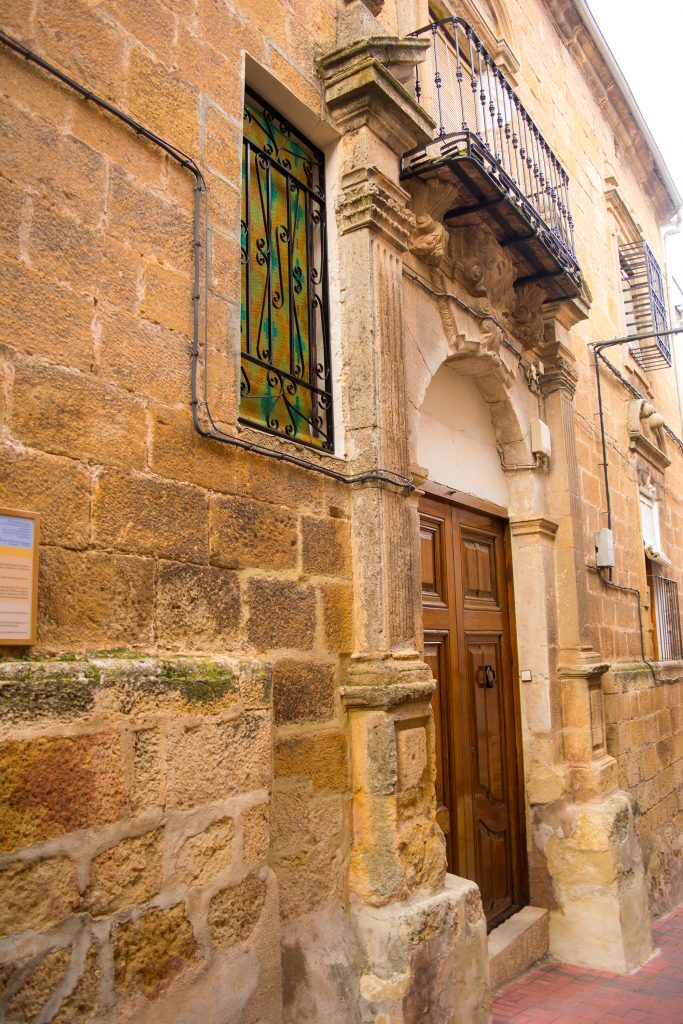
Palace of the Encomienda, home of Jorge Manrique
After contemplating the graffiti, enter the Historic Center of Chiclana through the audacious tunnel excavated in the imposing rock and approach the nearby Palacio de la Encomienda, where the Manrique family was housed, as Commander of the Order of Santiago. It is located a few meters from the Belin mural, entering the Historic Center of Chiclana through the tunnel excavated in the rock and which leads to the Plaza de la Constitución, the nerve center of the town and where one of the most distinguished monumental buildings, the Church of San Pedro, from the 17th century, is located. Continuing through…
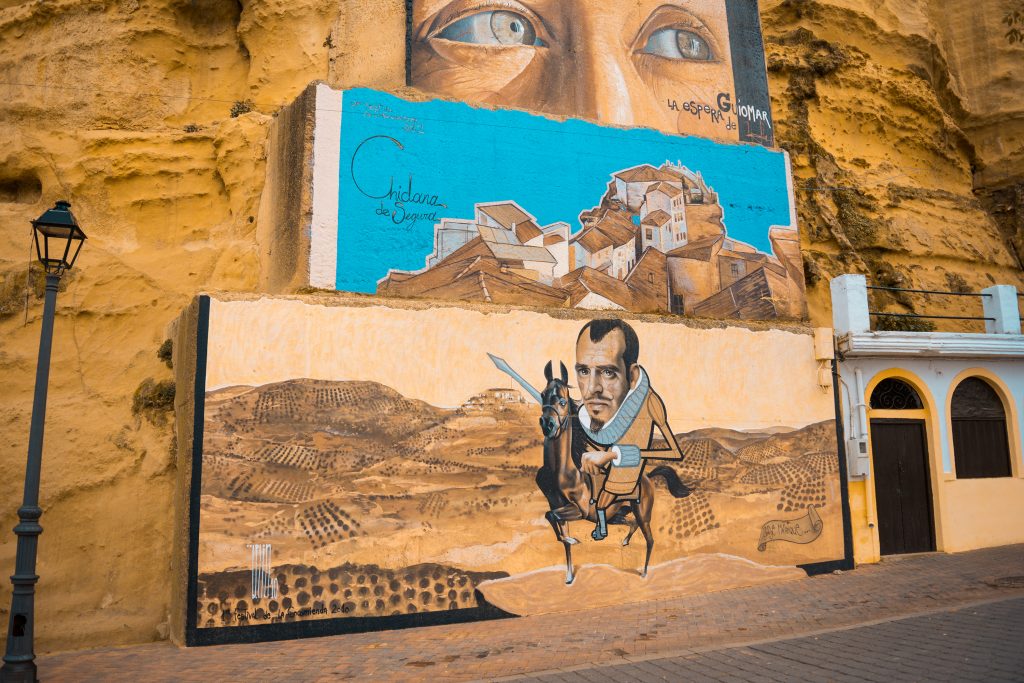
Mural dedicated to Jorge Manrique
Start your itinerary in Chiclana de Segura enjoying the interpretation made by the renowned graffiti artist Miguel Ángel Belinchón (Spanish plastic artist known in the world of art as Belin) of Jorge Manrique. The large-format, freehand painted mural, which demonstrates an incredible spatial vision, is made on the majestic rock wall that has historically protected this town, which defies an impossible geography. The entrance tunnel to the town was built in 1950 by the engineer Manuel Tercero Sánchez. Inside, there are 2 plaques commemorating this extraordinary feat of engineering. The impressive graffiti was made in the First Festival of the…
Length of the route
100 meters
Estimated duration
1 hours
Type of route
on foot
PLACES THAT MAKE UP THE ROUTE
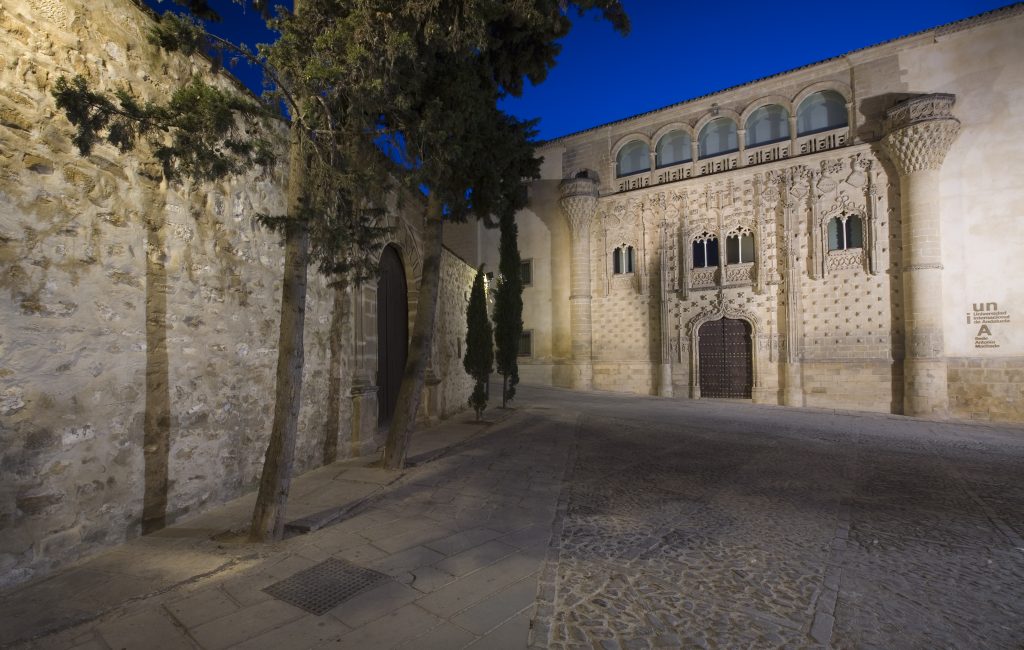
Jabalquinto palace
This Palace (which today is the headquarters of the International University of Andalusia) was ordered to be built at the end of the 15th century by Juan Alfonso de Benavides Manrique, Lord of Jabalquinto, whose son Manuel married Luisa Manrique, daughter of our beloved warrior poet. This family bond is the fact that links Jorge Manrique with this space in Baeza. When the author visited the city, he was a guest at the Palace on more than one occasion. A family relationship that compelled him to take part in the fight against Diego Fernández de Córdoba, being defeated and imprisoned…
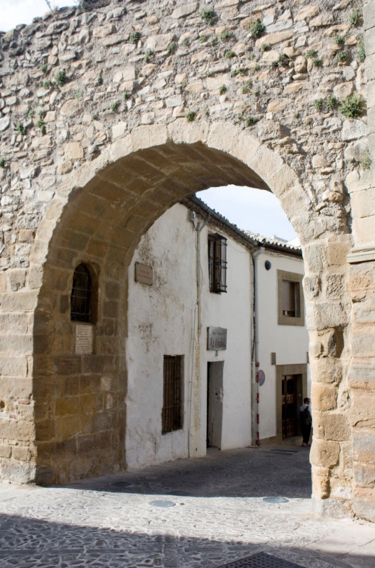
The Arch of Barbudo
While you enjoy in wandering through the marvelous Old Town of Baeza, stop by the Arch of Barbudo. This stone arch is what remains of one of the main access gates to the city. Its real name is Arco de San León, in honor of the Franciscan convent and former hermitage and later changed its name for the Arch of Barbudo(“Puerta del Barbudo”). The reason is given by the Portuguese Martín Yánez de la Barbuda, Master of the Order of Alcántara, who in 1394 passed through it with a large army to fight against the Muslims from Granada, being defeated…